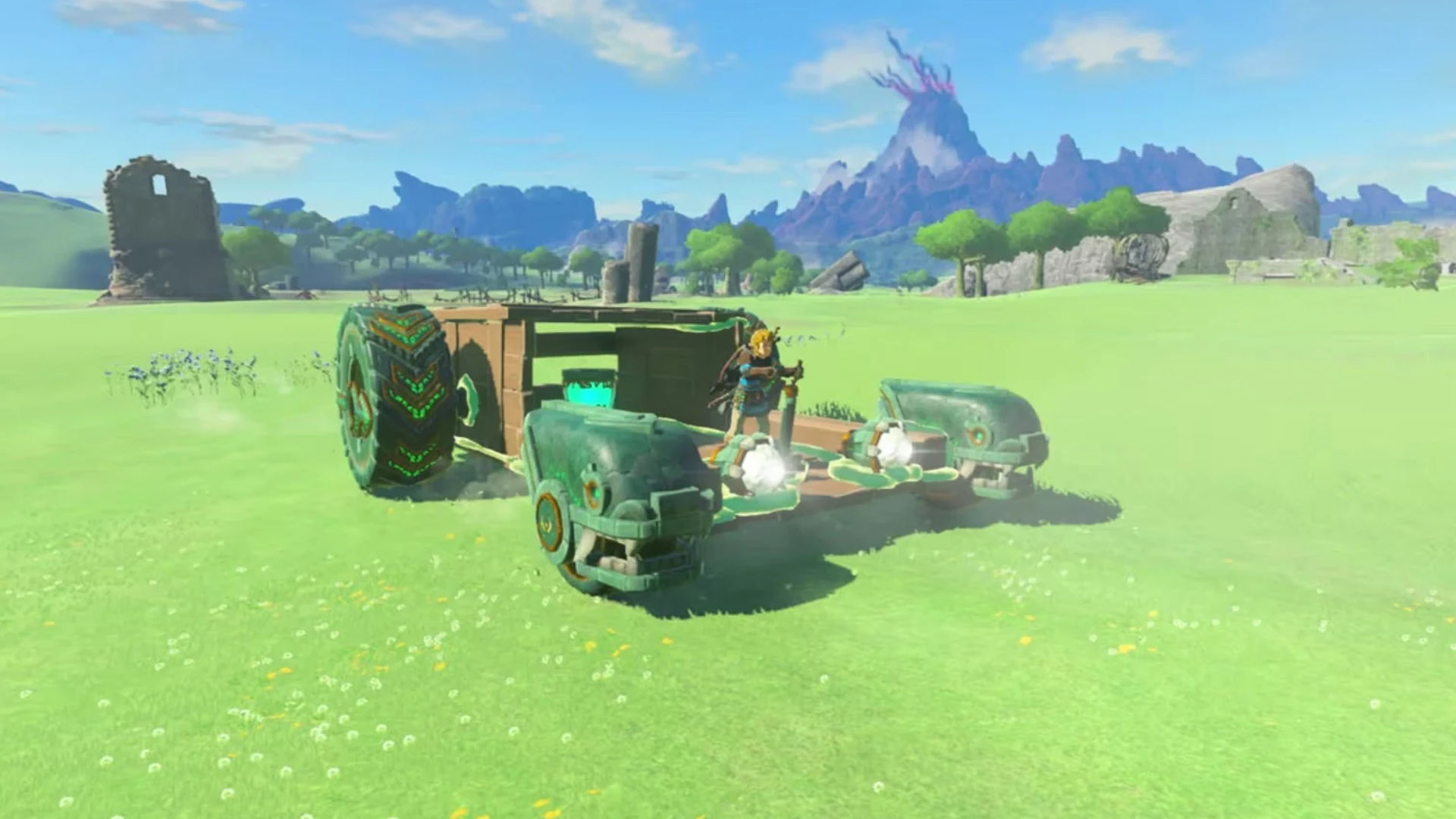Nintendo Files Multiple Patents for Tears of the Kingdom Game Mechanics
Posted on August 11 2023 by Rod Lloyd

When Nintendo announced a return to the world of Breath of the Wild for a direct sequel, there was an admitted fear within the fanbase that the new game would just be more of the same. But even with a reused map, the game that came to be known as Tears of the Kingdom introduced so many new abilities, systems, and mechanics that the entire experience still felt fresh and new. The team at Nintendo clearly put a lot of work into the development of these new features, and a new group of patent filings by the company seems to show a desire to lock those features down.
Japanese blogger naoya2k recently uncovered 31 patents filed by Nintendo between July 10th and August 4th that relate to specific mechanics in Tears of the Kingdom. The mechanics claimed vary widely by type and significance to gameplay, with some relating to abilities initiated by the player, others relating to the game’s physics calculations, and others relating to the game’s user interface.
While The Legend of Zelda: Tears of the Kingdom is not directly mentioned in these patents, the mechanics claimed, based on the descriptions and diagrams provided, are quite clearly from the latest Zelda game.
Naoya2k highlighted a few of the more noteworthy patents in their blog post. One patent highlighted relates to the Ultrahand ability, as it describes the in-game systems that prevent the player from manipulating an object with Ultrahand if the player character is standing on it. The patent also describes the physics systems at work when the player character is standing on a movable, dynamic object; if the object moves, the player character moves along with it. To demonstrate these systems, the diagrams provided show the player character standing on planks glued together with Ultrahand and on various in-game vehicles.
Another patent relates to Riju’s Power of Lightning, as it describes a program capable of generating an in-game effect based on a ranged attack initiated by the player. The diagrams provided show the player character initiating the Power of Lightning, creating a dome around a non-player character, and then initiating a lightning strike by shooting an arrow from their bow.
Other patents highlighted relate to less significant mechanics in Tears of the Kingdom, including the Hero’s Path feature and loading screens between fast travels.
I wouldn’t describe any of the content presented in these patents as earth-shattering, but I can at least see the act of patenting as an indication that Nintendo values the technology behind these mechanics and as an indication that they could utilize this technology again in the future. And at the very least, these patents are an interesting behind-the-scenes look at Tears of the Kingdom‘s many features.
Nintendo’s attempts to patent certain commonplace game mechanics has led to a larger conversation within the gaming community about the ethics, efficacy, and enforcement of such patents. Some have questioned Nintendo’s ownership over certain physics systems, gameplay features, and programming applications that are arguably not new or novel to its games. Does Nintendo have the authority to patent common mechanics utilized in games developed by other studios? Even if the patents encompass the technology behind the mechanics, and not the mechanics themselves, are such patents ethically dubious? Do they stifle innovation? Would these patents stand under legal scrutiny? These are all valid question brought forth since the discovery of this recent batch of patents.
Nintendo has been filing patents for Tears of the Kingdom since before the game had a title. Back in 2021, when everyone was still calling the game “the sequel to The Legend of Zelda: Breath of the Wild,” Nintendo filed a handful of patents that were later proven to be for mechanics introduced in Tears of the Kingdom, such as the abilities we now know as Ascend and Recall. These new patents are simply the latest instance of an ongoing pattern.
What are your thoughts on these newly filed Tears of the Kingdom patents? Do you enjoy getting these behind-the-scenes peeks at Nintendo’s development process? Do you think Nintendo has the right to patent these game mechanics in the first place? Share your thoughts in the comments below!
Source: naoya2k (via AUTOMATON, My Nintendo News)

Rod Lloyd is the Editor-In-Chief at Zelda Dungeon, overseeing the news and feature content for the site. Rod is considered the veteran of the writing team, having started writing for Zelda Informer in 2014 as a Junior Editor. After ZD and ZI officially merged in 2017, he stepped into the Managing Editor role and has helped steer the ship ever since. He stepped up to lead the writing team as Editor-In-Chief in 2023.
You can reach Rod at: rod.lloyd@zeldadungeon.net











